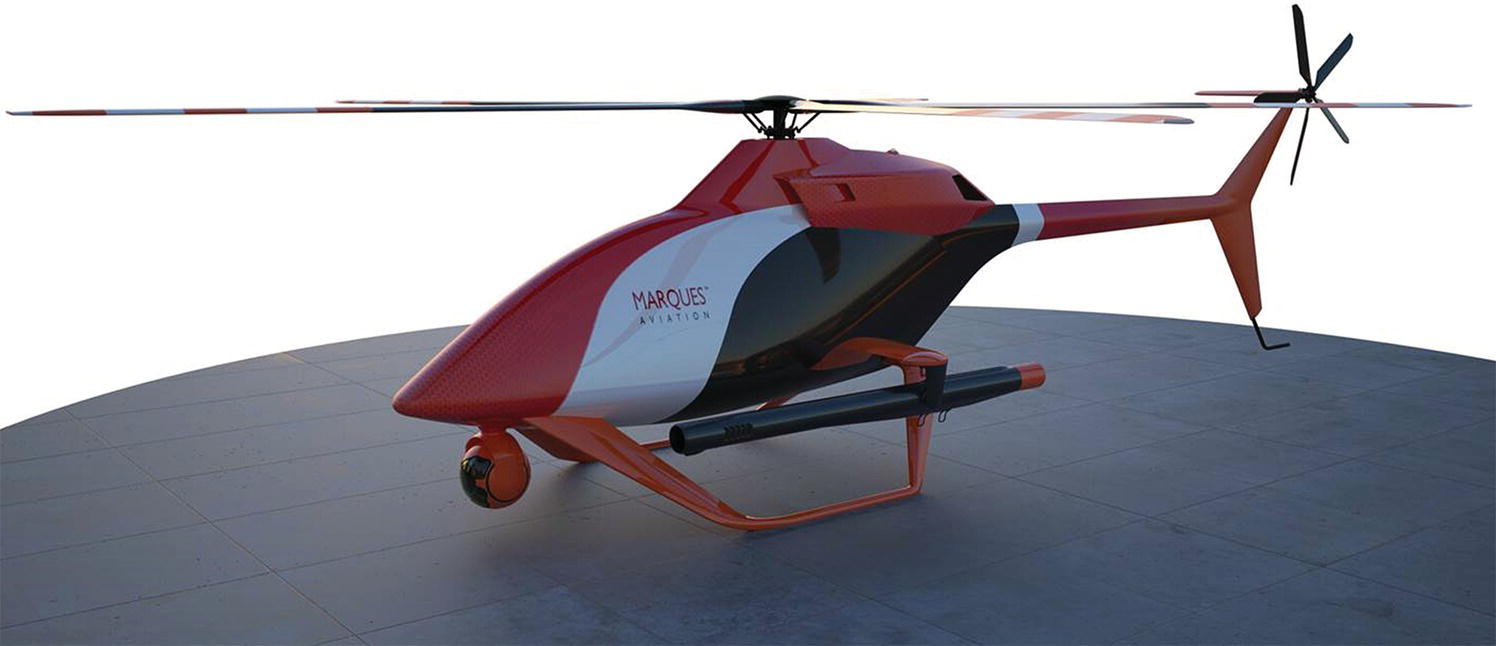11 Active Blade Twist in Rotary UAVs using Smart Actuation
Pascual Marqués
Marques Aviation Ltd, Southport, UK
11.1 Introduction

Figure 11.1 MA THOR Heli VTOL‐UAS.
Image: Marques Aviation Ltd.
Helicopter rotors operate in a complex unsteady aerodynamic environment characterised by cyclic variation of centrifugal and aerodynamic loads on the rotating blades (Figure 11.1). Various aerodynamic phenomena occurring on the helicopter rotor generate vibration and noise, and these are most pronounced in forward flight and during descent. In forward flight, the advancing blade can undergo airflow velocities close to the speed of sound; in this transonic regime shock waves can be generated. The retreating blade can experience dynamic stall and stall flutter (Feszty and Nitzsche 2011; Figure 11.2).
Both shock waves and dynamic stall cause vibration on the rotor, which is transferred through the shaft to the fuselage. Moreover, the helical tip vortex developed by each blade interacts with the other blades in a phenomenon known as BVI, which is an additional source of vibratory loads and noise. The amplitude of vibration recorded inside the fuselage of a helicopter is typically about 0.4 g and the frequency of peak vibration is between 1/rev and N/rev; where, N signifies the number of blades (Konstanzer et al. 2008). Therefore, typical frequencies are in the range of 2–8 Hz ...
Get Advanced UAV Aerodynamics, Flight Stability and Control now with the O’Reilly learning platform.
O’Reilly members experience books, live events, courses curated by job role, and more from O’Reilly and nearly 200 top publishers.

